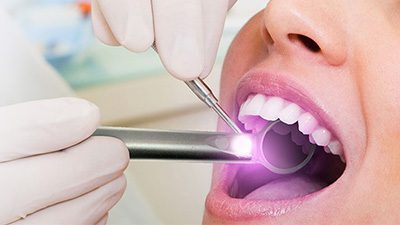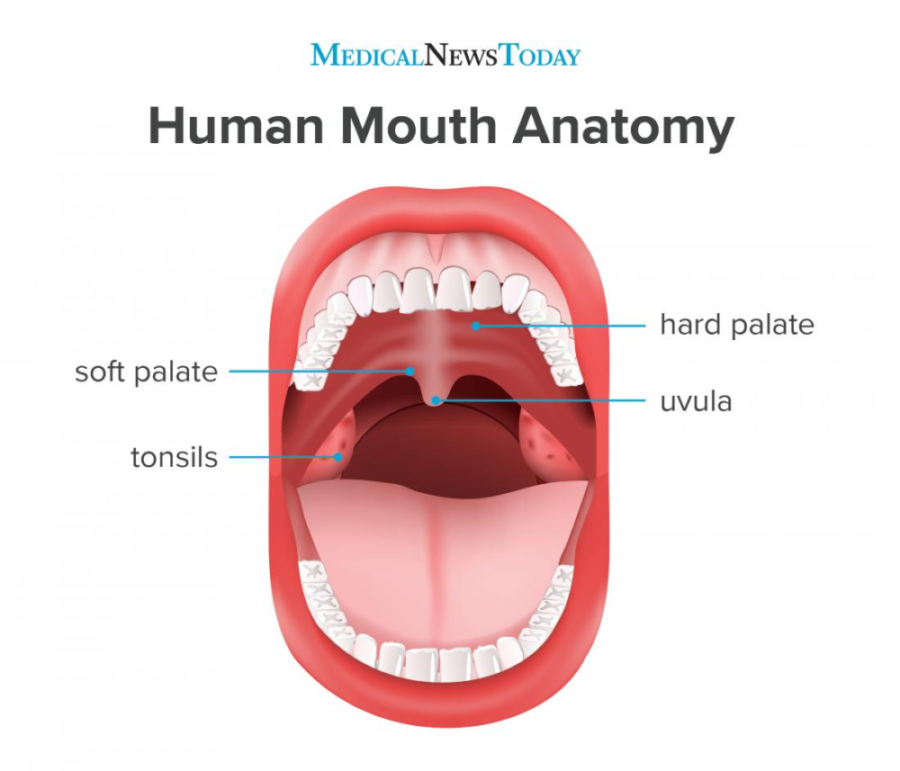Gazing into the mirror, have you ever wondered what secrets lie within the depths of your oral cavity? Beyond the bright smile and pearly whites, there exists a hidden realm where intriguing and often enigmatic occurrences take place. As the writer of this blog, I, Dr. Chirag Chamria, invite you on an extraordinary journey to explore the world of oral cysts – those elusive formations that can reside within our mouths, affecting millions of patients worldwide. So, fasten your seatbelts, dear patients, for we are about to embark on a captivating odyssey that will unravel the mysteries of the most common cysts lurking beneath the surface of your oral domain.
What exactly are Oral Cysts?
Oral cysts are fluid-filled or semi-solid sacs that can form within the oral cavity. They can emerge in various locations, including the gums, lips, palate, jawbone, or even around the roots of teeth. These cystic formations are quite common, and while some of them are harmless and resolve on their own, others may require medical intervention to prevent complications.

Silent Intruders: Radicular Cysts in Oral Cavity
Consider the possibility of an invader waiting patiently in a secret realm between your teeth. Today, we’ll take a closer look at radicular cysts, sometimes called periapical cysts, one of the most prevalent types of cystic forms in the mouth.
The Origins of Radicular Cysts:
Radicular cysts emerge as a consequence of dental infections or trauma that affect the innermost part of the tooth, known as the dental pulp. Dental pulp houses blood vessels, nerves, and connective tissues that keep our teeth alive. When tooth decay goes untreated, bacteria can penetrate deep into the tooth, leading to inflammation and infection of the dental pulp. As the infection progresses, the body’s defense mechanism attempts to contain it by forming a sac-like structure at the tip of the tooth’s root, giving birth to the radicular cyst.
The Silent Intruders:
One of the remarkable aspects of radicular cysts is their ability to remain silent invaders, often undetected until they grow large enough to cause noticeable symptoms. Due to their slow growth rate, these cysts may exist within the jawbone for years without any outward signs, leading patients to believe that all is well with their oral health.
Signs and Symptoms:
As radicular cysts increase in size and exert pressure on surrounding structures, patients may begin to experience symptoms such as dull throbbing pain, sensitivity to hot or cold, or discomfort while chewing. The cyst’s presence might also cause swelling and tenderness in the affected area. However, it is essential to note that not all radicular cysts lead to noticeable symptoms, which makes regular dental check-ups crucial for early detection.

Diagnosis and Treatment:
Detecting radicular cysts requires a comprehensive dental examination, including X-rays and other imaging techniques. Once diagnosed, the appropriate treatment plan can be devised. The primary goal of treatment is to eliminate the infection and remove the cyst to prevent further damage. This typically involves root canal treatment to clean out the infected pulp and the cyst’s surgical removal.
Unravel Mucous Mystery: Mucoceles Cysts in Oral Cavity
Mucoceles are a fascinating phenomenon that arise, disappear, and resurface in the fascinating world of the mouth cavity. These mysterious mucous membranes pique the attention of both patients and dentists, so let us set sail today to discover their inner workings.
Enigmatic Appearance of Mucoceles:
Picture this: a small, bluish or clear bump suddenly appears on the inner lips, cheeks, or the floor of your mouth, seemingly out of nowhere. Congratulations, you’ve just encountered a mucocele! These peculiar cysts arise when one of the tiny salivary glands within the oral mucosa becomes blocked or damaged, causing saliva to accumulate beneath the surface. The result is a painless, fluid-filled sac that gives birth to the enigmatic mucocele.
A Vanishing Act:
The Spontaneous Rupture: Here’s the most bewildering aspect of mucoceles – they have a knack for vanishing just as quickly as they appear. Mucoceles often undergo spontaneous rupture, releasing the accumulated saliva into the mouth. As the fluid drains away, the mucocele may seemingly disappear, leaving patients both intrigued and puzzled. However, don’t be too quick to celebrate, as these vanishing acts are often temporary. Mucoceles tend to reappear, creating a cycle of appearances and disappearances that can be rather perplexing.
Minor Bother or Major Discomfort?
Although mucoceles are typically harmless and painless, their recurring nature can become bothersome for some individuals. Constantly experiencing the appearance and disappearance of these bumps may lead to concerns about their underlying cause or potential complications. Additionally, larger mucoceles may cause discomfort, especially if they interfere with eating, speaking, or wearing dental appliances.
Causes and Risk Factors:
Mucoceles can occur due to various factors, including trauma to the oral mucosa, such as accidentally biting the inside of the cheek or lips, or damage to the tiny salivary gland ducts. In some cases, habits like lip or cheek biting or sucking can increase the risk of developing mucoceles. It’s essential to identify and address any habits or activities that may contribute to the formation of these intriguing cysts.
Seeking the Magic Cure:
As patients encounter the magical appearances of mucoceles, the natural question that arises is how to make them disappear for good. While mucoceles can resolve on their own, especially after rupturing, there are instances where they persist and require medical intervention. Dentists, like myself, Dr. Chirag Chamria of Royal Dental Clinics, may perform a simple surgical procedure to remove the mucocele and its associated gland, ensuring a more permanent solution.
Impacted Teeth and Dentigerous Cysts in Oral Cavity
Teeth fighting for their proper positions against the pressures of cystic formations in the oral canal is a conflict of epic proportions. Impacted teeth and their strong opponents, dentigerous cysts, are at the center of this struggle. Today, we’ll begin a riveting account of this fascinating story.
The Quest for Eruption:
In the journey towards adulthood, our teeth undergo a remarkable transformation. As the permanent teeth begin to emerge, they embark on a quest to find their rightful positions within the dental arch. However, not all teeth successfully complete this journey. Some teeth may get stuck beneath the gum tissue or jawbone, unable to emerge into the oral cavity – a condition known as tooth impaction.

The Menace of Dentigerous Cysts:
Impacted teeth, unable to find their way, encounter a formidable adversary – dentigerous cysts. These cysts develop around the crown of the impacted tooth, forming a fluid-filled sac that exerts pressure on the surrounding tissues, including the adjacent teeth and the jawbone. As the cyst expands, it poses a threat to the integrity of the jawbone and may lead to complications if left unchecked.
The Silent Intruders Strike:
The most insidious aspect of this saga is that dentigerous cysts often lurk silently, without causing immediate pain or discomfort. Patients may remain blissfully unaware of the presence of these silent intruders until complications arise. Regular dental check-ups and routine X-rays are essential to detect impacted teeth and the potential development of dentigerous cysts.
The Battle Unleashed:
Symptoms and Complications: As the battle between impacted teeth and dentigerous cysts intensifies, symptoms may eventually emerge. Patients might experience localized swelling, tenderness, or pain in the affected area. In severe cases, the cyst’s expansion can lead to jawbone erosion, root resorption in adjacent teeth, and even the risk of cystic transformation into a more concerning type of cyst.
Triumph through Early Detection:
In this saga, victory lies in early detection. Dental professionals, like myself, Dr. Chirag Chamria of Royal Dental Clinics, play a crucial role in identifying impacted teeth and potential dentigerous cysts through thorough dental examinations and diagnostic imaging. Timely intervention can prevent complications and preserve the integrity of the dental arch.
Conquering the Foes:
Treatment and Management: Once the battle between impacted teeth and dentigerous cysts is recognized, a well-planned strategy for treatment and management can lead to triumph. Depending on the severity of the case, treatment may involve the surgical removal of the cyst and impacted tooth. In less complex situations, orthodontic intervention might be employed to guide the impacted tooth into its correct position.
Palatal Enigma: Palatal Cysts in the Oral Cavity
Palatal cysts are a mysterious and varied collection of oral cysts found in the fascinating environment of the oral cavity, where the palate serves as the magical ceiling. Patients and dentists alike have long been perplexed by these peculiar forms. In this article, we will investigate the mystery of the palatal region and explain some of the lesser-known facts about these odd cysts.
The Palatal Landscape:
Before we delve into the world of palatal cysts, let us first understand the terrain they inhabit. The palate, or the roof of the mouth, plays a vital role in various essential functions such as speech, chewing, and swallowing. Nestled amidst the intricacies of this region, palatal cysts silently reside, each with its unique characteristics and mysteries.
The Enigmatic Types:
Palatal cysts encompass a diverse array of formations, each with a distinct origin and appearance. Among the common types are Nasopalatine Duct Cysts, Median Palatal Cysts, and Lateral Palatal Cysts. Understanding the differences between these cysts can provide valuable insights into their potential impact on oral health.
Nasopalatine Duct Cysts:
The Nasopalatine Duct Cysts, also known as Incisive Canal Cysts, typically arise from the remnants of the embryonic nasopalatine duct, which plays a crucial role in the development of the palate. When these duct remnants fail to close fully after birth, they may give rise to cystic formations. Nasopalatine Duct Cysts are the most common type of palatal cyst and often appear in the midline of the palate, near the upper front teeth.
Median Palatal Cysts:
Among the rarest of palatal cysts, the Median Palatal Cysts tend to emerge in the midline of the palate. Little is known about their precise origin, adding to the enigmatic nature of these formations. Despite their infrequency, dental professionals must be vigilant in detecting and diagnosing these cysts to ensure timely management.
Lateral Palatal Cysts:
Unlike their midline counterparts, Lateral Palatal Cysts develop away from the midline and are often associated with the lateral incisor or canine teeth. These cysts, though not as rare as Median Palatal Cysts, still present a unique set of challenges in diagnosis and treatment.
The Silent Intruders:
In the realm of palatal cysts, silence is a common trait. Many of these cysts remain asymptomatic and are discovered incidentally during routine dental examinations or imaging. However, their seemingly dormant nature does not undermine the importance of early detection and proper management to prevent potential complications.
Conclusion
As we draw the curtains on our enthralling exploration of oral cysts, I, Dr. Chirag Chamria, hope you have gained valuable insights into the hidden wonders of your oral cavity. Remember, knowledge is your most potent weapon against these mysterious formations, and regular dental check-ups with experts like myself at Royal Dental Clinics can help ensure early detection and timely intervention. So, dear patients, embrace the power of awareness, and let’s navigate the oral labyrinth together, ensuring that your smiles remain as radiant as ever, unobscured by the shadows of oral cysts. Until next time, keep exploring, keep smiling!
© All rights reserved by Royal Dental Implants Pvt Ltd
Issued in public interest





